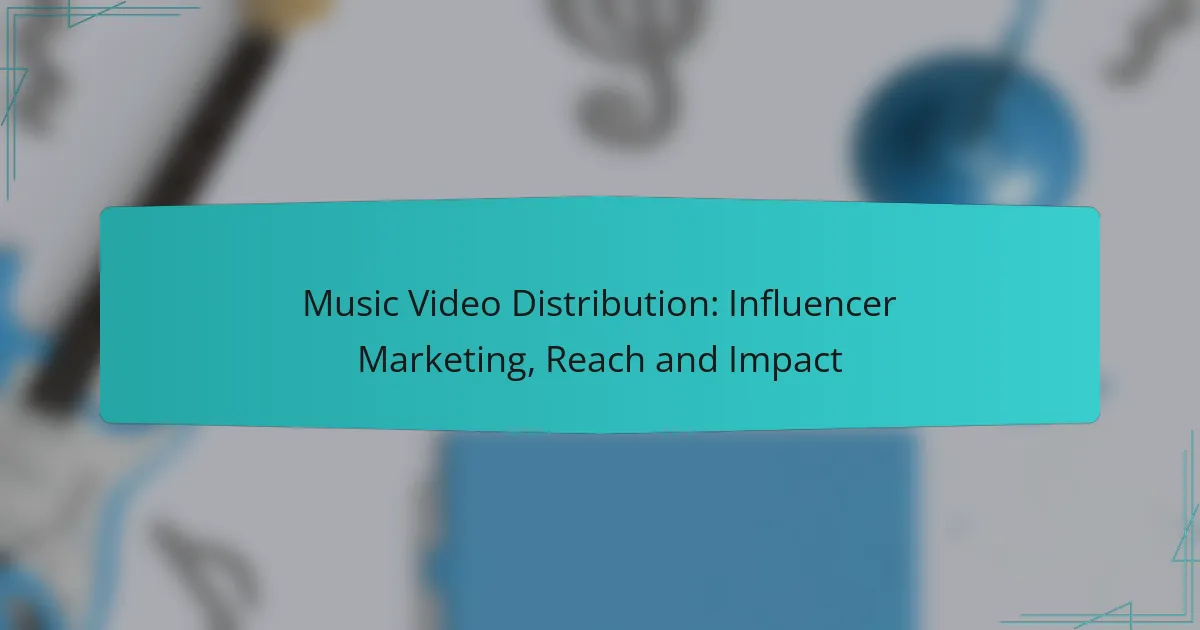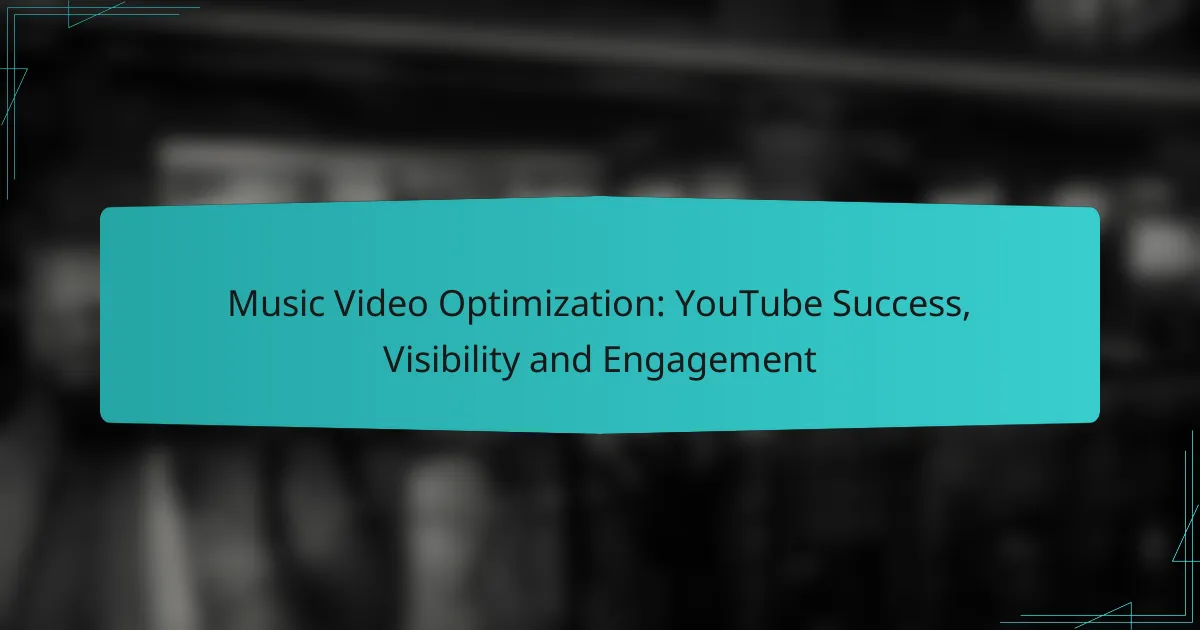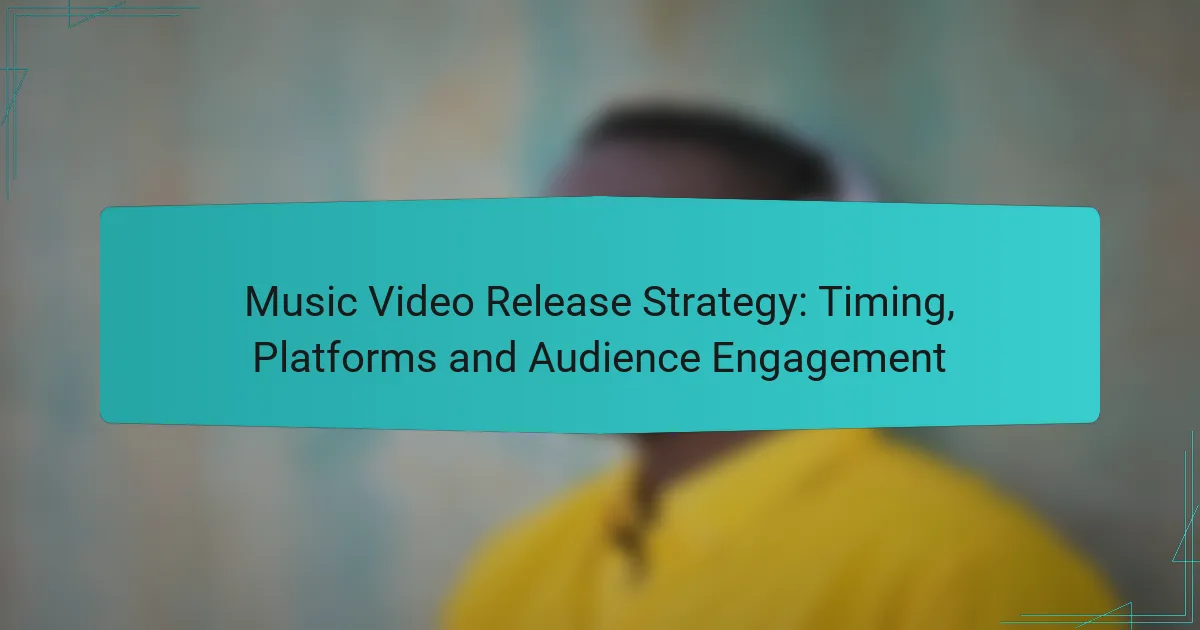Influencer marketing plays a crucial role in the distribution of music videos by harnessing the extensive reach and credibility of social media personalities. By partnering with influencers, artists can effectively engage with established audiences, resulting in increased views and interaction with their content. This approach not only broadens the reach but also allows for deeper connections with niche markets that traditional advertising may overlook.
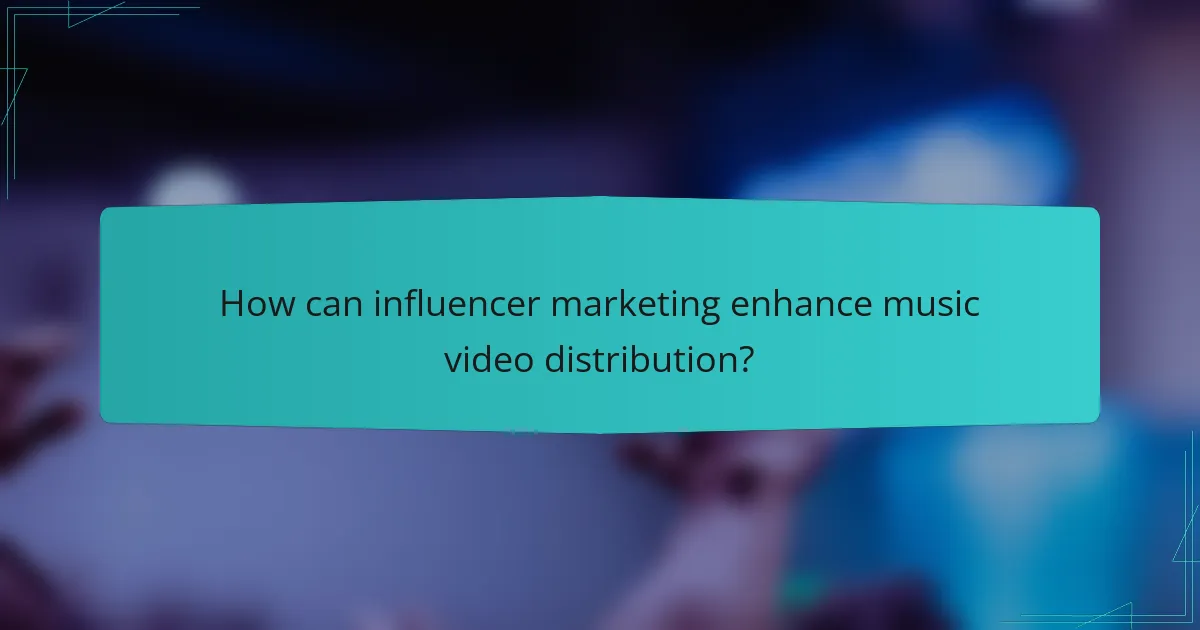
How can influencer marketing enhance music video distribution?
Influencer marketing can significantly enhance music video distribution by leveraging the reach and credibility of popular figures in social media. By collaborating with influencers, artists can tap into established audiences, driving more views and engagement for their videos.
Increased audience engagement
Influencers often have dedicated followers who trust their opinions and recommendations. When they promote a music video, it can lead to higher engagement rates, as fans are more likely to interact with content shared by someone they admire. This can manifest in likes, shares, and comments, creating a buzz around the video.
To maximize engagement, artists should choose influencers whose audience aligns with their target demographic. For instance, a pop artist might collaborate with a lifestyle influencer to reach a broader audience, while a niche genre artist could partner with a specialized music influencer.
Broader reach through social platforms
Influencer marketing allows music videos to reach audiences across various social media platforms, including Instagram, TikTok, and YouTube. Each platform has unique user demographics and content styles, enabling artists to tailor their approach for maximum impact.
For example, a short, catchy clip of a music video might perform well on TikTok, encouraging users to create their own content around it. Artists should consider multi-platform strategies to ensure their music videos gain visibility across different channels.
Authenticity and trust building
Collaborating with influencers can lend authenticity to a music video, as fans often perceive these partnerships as genuine endorsements. This trust can lead to increased viewership, as audiences are more likely to check out a video recommended by someone they follow.
To build this authenticity, artists should select influencers who genuinely resonate with their music style and values. A well-aligned partnership can create a more compelling narrative, enhancing the overall impact of the music video and fostering a loyal fan base.
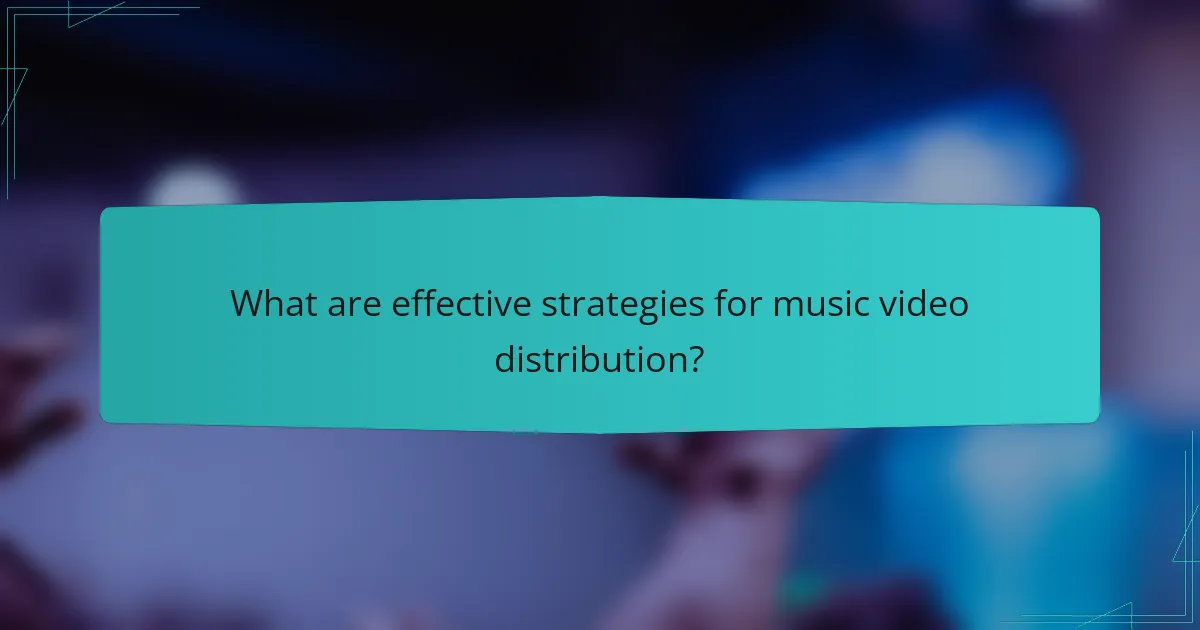
What are effective strategies for music video distribution?
Effective strategies for music video distribution include leveraging social media, collaborating with influencers, and utilizing streaming services. Each method enhances reach and impact, helping artists connect with their target audience more effectively.
Utilizing social media platforms
Social media platforms are crucial for music video distribution, as they allow artists to share content directly with fans. Platforms like Instagram, TikTok, and Facebook enable quick engagement through shares, likes, and comments, amplifying visibility.
To maximize impact, tailor content for each platform. For instance, short clips work well on TikTok, while longer teasers can be effective on YouTube. Regularly posting updates and behind-the-scenes content can keep audiences engaged and eager for new releases.
Collaborating with influencers
Collaborating with influencers can significantly enhance the reach of music videos. Influencers often have dedicated followings that trust their recommendations, making them valuable partners for promoting new releases.
Choose influencers whose audience aligns with your target demographic. A well-placed shoutout or a creative collaboration can lead to increased views and engagement. Consider offering exclusive content or early access to incentivize influencers to promote your video.
Leveraging streaming services
Streaming services like Spotify and Apple Music play a vital role in music video distribution. These platforms not only host music but also provide video content, allowing artists to reach listeners where they already consume music.
To effectively leverage these services, ensure your music video is included in playlists and featured sections. Engaging with platform-specific promotional tools, such as Spotify’s Canvas feature, can enhance viewer experience and encourage sharing among users.
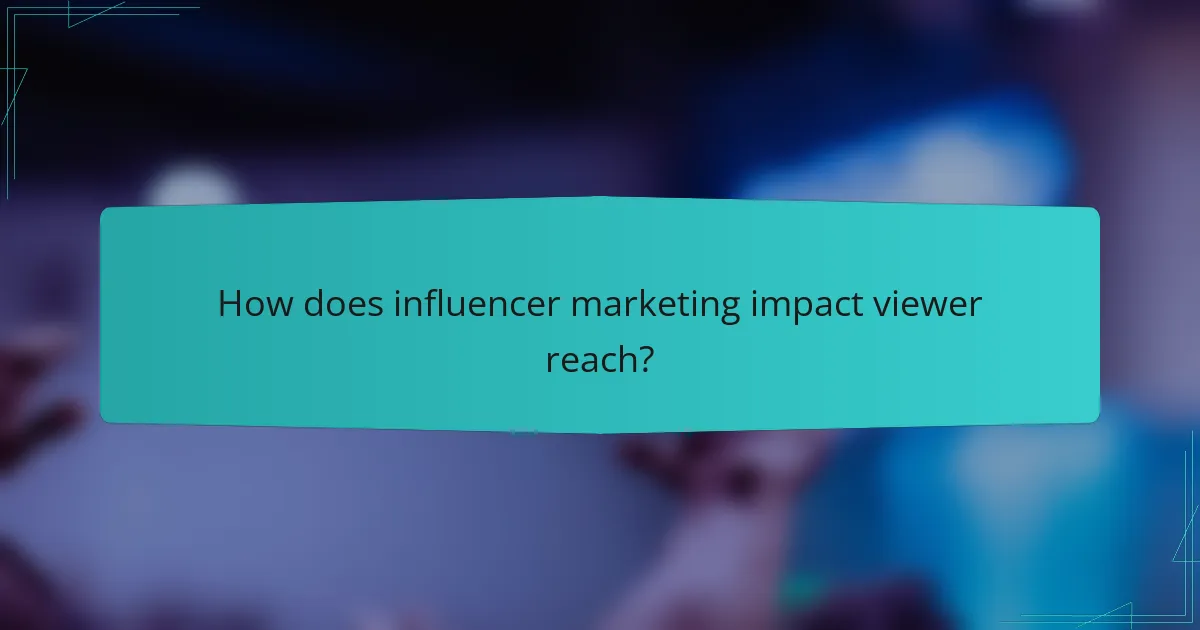
How does influencer marketing impact viewer reach?
Influencer marketing significantly enhances viewer reach by leveraging the established trust and audience of influencers. This strategy allows music videos to tap into niche markets and demographics that may be difficult to access through traditional advertising methods.
Targeted audience access
Influencers often have dedicated followers who share specific interests, making them ideal for targeting particular demographics. By collaborating with influencers whose audiences align with the music genre or message, artists can ensure their videos reach viewers who are more likely to engage.
For example, a pop artist might partner with a lifestyle influencer to reach younger audiences on platforms like Instagram or TikTok, where these demographics are most active. This targeted approach can lead to more effective marketing campaigns and higher engagement rates.
Higher conversion rates
Influencer marketing can lead to higher conversion rates compared to traditional advertising. When influencers promote a music video, their endorsement can create a sense of authenticity and urgency, encouraging their followers to watch and share the content.
Studies suggest that influencer-driven campaigns can achieve conversion rates that are several times higher than standard digital ads. This is particularly true when influencers create engaging content that resonates with their audience, such as behind-the-scenes footage or personal stories related to the music.
Enhanced shareability
Content shared by influencers tends to be more shareable, as their followers often trust their recommendations. When an influencer shares a music video, it not only reaches their audience but also encourages followers to share it within their own networks, amplifying its reach.
To maximize shareability, artists should encourage influencers to create unique, engaging content around the video, such as challenges or reactions. This can lead to organic sharing and discussions, further increasing the video’s visibility across social media platforms.
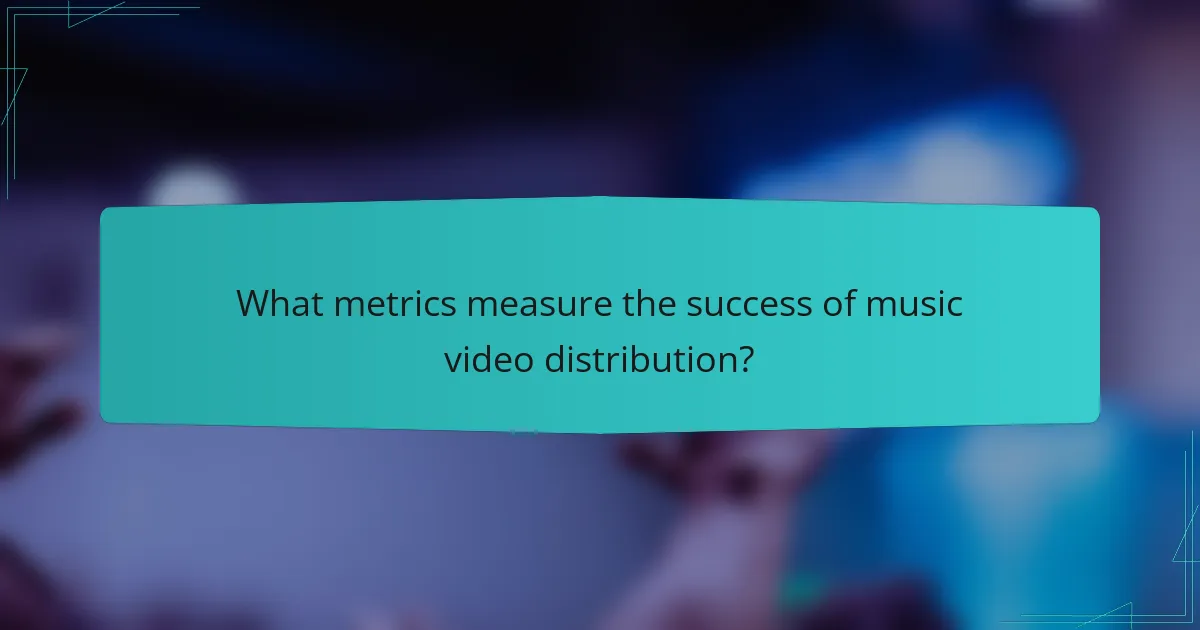
What metrics measure the success of music video distribution?
Success in music video distribution is primarily measured through view counts, engagement rates, social media shares, and influencer reach. These metrics provide insights into how well a video resonates with its audience and the effectiveness of promotional strategies.
View counts and engagement rates
View counts indicate the total number of times a music video has been watched, serving as a basic measure of popularity. Engagement rates, which include likes, comments, and shares, provide a deeper understanding of how viewers interact with the content. A high engagement rate, often above 5%, suggests that the audience is not just watching but actively participating.
To maximize these metrics, consider optimizing video titles and thumbnails to attract clicks. Regularly analyzing viewer feedback can also help refine future content and distribution strategies.
Social media shares
Social media shares reflect how often a music video is distributed across platforms like Facebook, Twitter, and Instagram. This metric is vital as it indicates the video’s organic reach and potential to go viral. Aiming for a share rate of around 10% of total views can signify strong viewer endorsement.
Encouraging viewers to share can be achieved through calls to action in the video or by creating shareable content, such as behind-the-scenes clips or engaging visuals. Avoid overwhelming audiences with excessive promotional requests, as this can lead to viewer fatigue.
Influencer reach and impressions
Influencer reach measures the number of unique users who see a music video promoted by influencers, while impressions count the total views, including repeat exposures. Collaborating with influencers can significantly amplify a video’s visibility, especially if they have a dedicated following in a relevant niche. Aim for influencers whose audience aligns with your target demographic for the best results.
When selecting influencers, consider their engagement rates and authenticity, as these factors can greatly impact the effectiveness of the promotion. Track the performance of influencer campaigns to assess their return on investment and adjust strategies accordingly.
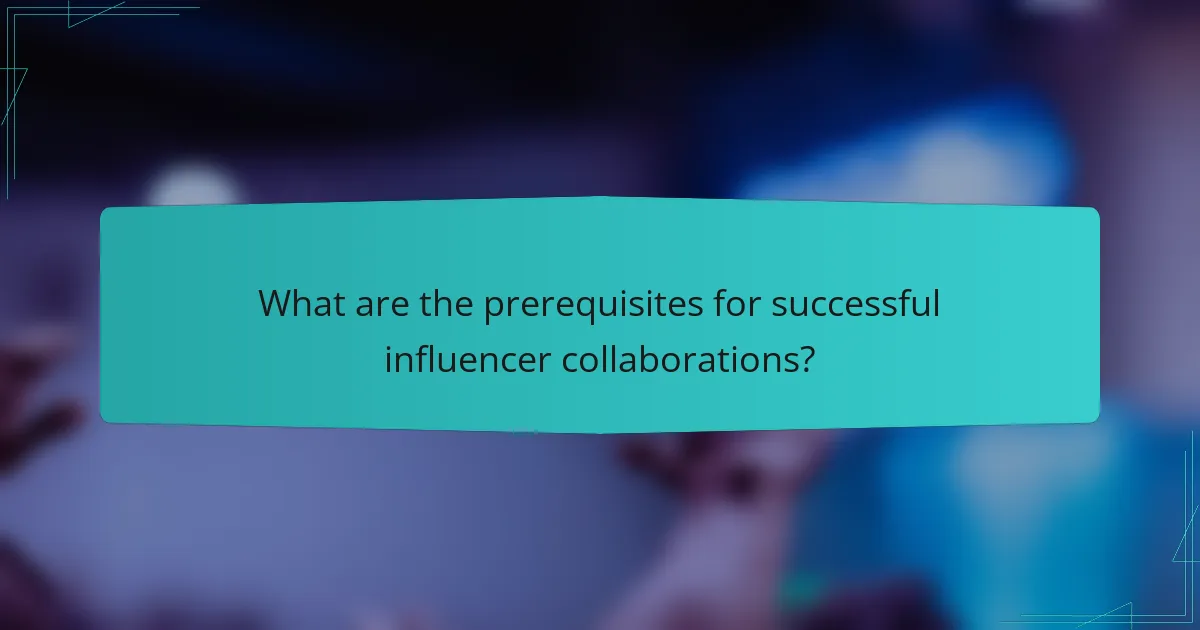
What are the prerequisites for successful influencer collaborations?
Successful influencer collaborations require a strategic approach that includes selecting the right influencers, defining clear campaign goals, and managing budget considerations. These elements are crucial for maximizing reach and impact in music video distribution.
Identifying the right influencers
Choosing the right influencers is essential for effective collaborations. Look for influencers whose audience aligns with your target demographic and who have a genuine interest in your music genre. Analyze their engagement rates, follower counts, and content style to ensure they can authentically promote your video.
Consider using tools like social media analytics platforms to assess potential influencers. Focus on micro-influencers, as they often have higher engagement rates and can be more cost-effective than larger accounts.
Setting clear campaign goals
Establishing clear campaign goals is vital for measuring success. Determine what you want to achieve, whether it’s increasing views, driving downloads, or boosting social media engagement. Specific, measurable objectives will guide your strategy and help evaluate the effectiveness of the collaboration.
For instance, aim for a target number of views within a specific timeframe or a percentage increase in social media followers. Communicate these goals with your influencers to ensure alignment and focus throughout the campaign.
Budget considerations
Budgeting for influencer collaborations involves understanding the costs associated with different influencers and campaign types. Influencer fees can vary widely based on their reach, engagement, and the complexity of the campaign. Allocate funds for not just influencer payments but also for production, promotion, and potential ad spend.
As a guideline, consider setting aside a budget range that allows flexibility. For smaller influencers, fees might start in the low hundreds of USD, while larger influencers could demand thousands. Always negotiate terms and ensure that the expected return on investment justifies the expenditure.
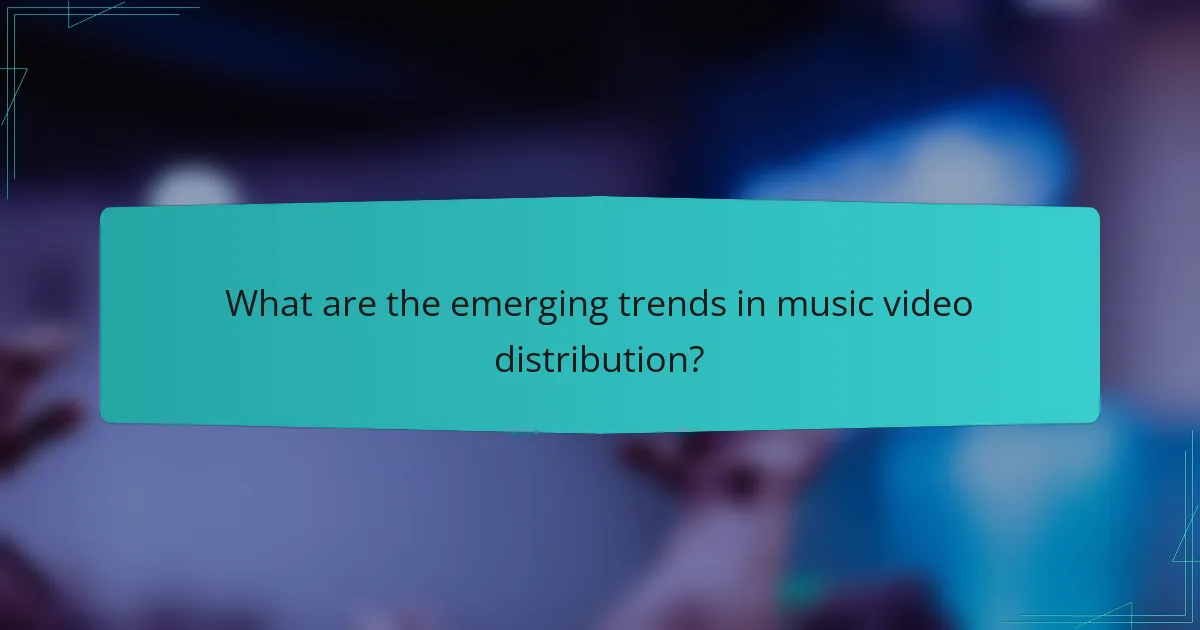
What are the emerging trends in music video distribution?
Emerging trends in music video distribution focus on leveraging digital platforms, influencer marketing, and data analytics to enhance reach and impact. Artists and labels are increasingly utilizing social media and streaming services to connect with audiences in innovative ways.
Influencer marketing in music video distribution
Influencer marketing has become a key strategy in music video distribution, allowing artists to tap into established audiences. By collaborating with influencers who resonate with their target demographic, musicians can amplify their reach and engagement significantly.
For effective influencer partnerships, consider factors such as audience alignment, engagement rates, and the influencer’s authenticity. A well-chosen influencer can enhance credibility and drive traffic to the music video, leading to higher view counts and shares.
Maximizing reach through social media
Social media platforms are essential for maximizing the reach of music videos. Platforms like Instagram, TikTok, and YouTube offer unique features that can be leveraged for promotional campaigns, such as short clips, stories, and live sessions.
To maximize reach, artists should create shareable content that encourages user interaction. Engaging with fans through comments and challenges can further increase visibility and foster a community around the music.
Measuring impact and engagement
Measuring the impact of music video distribution involves analyzing metrics such as views, shares, and audience retention rates. These insights help artists and labels understand what resonates with their audience and refine their strategies accordingly.
Utilizing tools like Google Analytics and social media insights can provide valuable data. Artists should focus on key performance indicators (KPIs) that align with their goals, whether it’s increasing brand awareness or driving sales.
